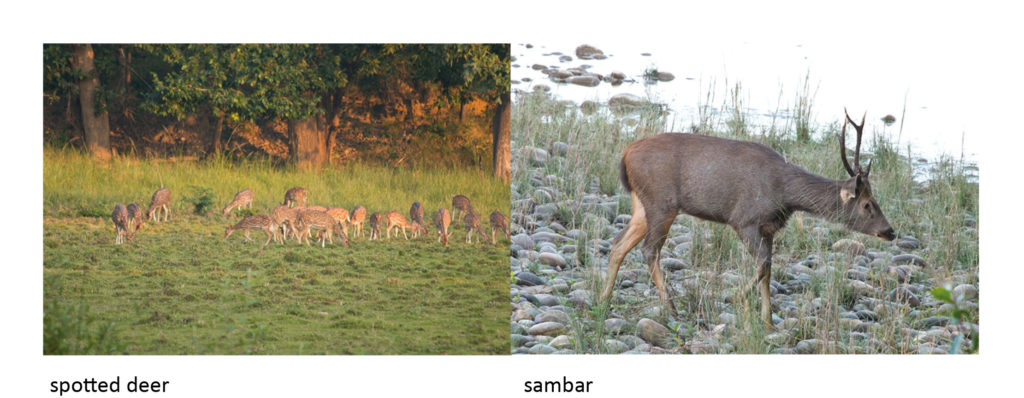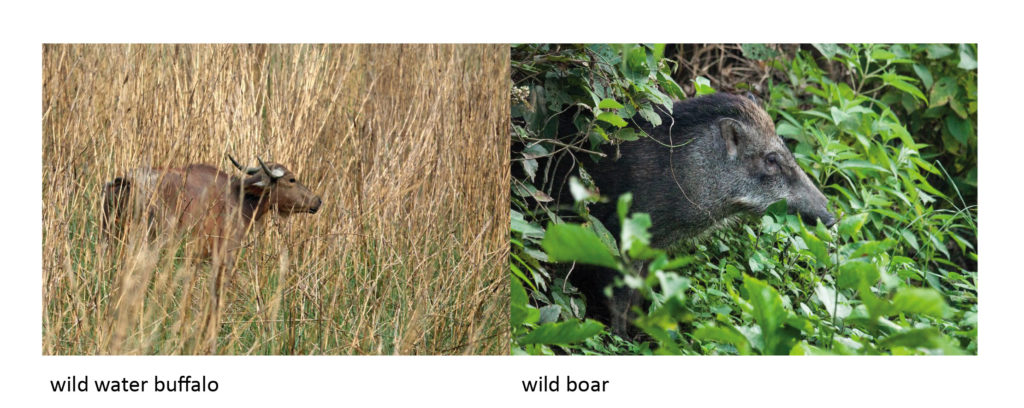N
epal is the first of all ‘tiger states’ that doubled its number of tigers. Not in 2022 but already in 2018!! However, government conservationists in Nepal now have voiced the concern about (a) how many tigers Nepal’s protected area system can harbour, and (b) what will determine the sustainability of a larger tiger population?

The Himalayan Tiger Foundation asked Prof. dr. Herbert Prins, Dr. Joost de Jong (both Wageningen University, the Netherlands) and Shyam Thapa MSc (head of NTNC Bardiya, PhD-student at Wageningen University) to discuss both issues. They report as follows.
(photograph tiger: (c) 2015 J.J.M. van Alphen, Leiden).
When the then Prime Minister of Russia, Vladimir Putin, chaired the Tiger Summit in St Petersburg in November 2010, the “Tiger States” made it their firm and fast intention to see the number of tigers doubled by the year 2022. This Tiger Summit was attended by five Heads of State and by the Chair of the World Bank, and a Tiger Initiative (see: St. Peterburg Declaration) was launched. Following this tiger summit, the Government of Nepal committed itself to have the number of tigers in Nepal doubled and, as first of all tiger states, achieved this in the summer of 2018.

Nepalse army patrolling BNP
This enormous achievement was made through drastically stepping-up the protection of tigers, amongst others by deploying the Nepal Armed Forces but also by engaging the judicial branch of government, by improving the forensic toolbox with genetics, by gazetting a new National Park, and by engaging local communities.
Bardiya National Park (BNP)
BNP lost its large tiger prey (gaur and wild water buffalo) many years ago, and also nilgai numbers are close to zero. Tigers thus have to survive on wild boar and deer (sambar, swamp deer, chital, hog deer and muntjac) or have to revert to killing livestock (cattle, domestic water buffalo mainly). If the latter would happen, then this would threaten the local support for wildlife conservation.
As long as a local gaur and arna (i.e., wild water buffalo) populations have not been restored, the tigers will have to survive and sustain their numbers on wild deer mainly. HTF and its partners identified this as a major concern.
Deer population
When cattle and people were removed from BNP, at the end of the 1970s, Dinerstein estimated the total number of deer at ca. 45,000. Our colleague Prof. dr. Jacques van Alphen and his students estimated the number of deer in 2013 at ca. 35,000. Herbert Prins and Joost de Jong estimate that for the current number of adult tigers (189 mid-2018) plus juveniles and sub-adults, ca. 20,000 axis deer would be needed to maintain that population. Shyam Thapa, however, has the feeling that there are only ca. 5,000 deer in the park at the moment. In other words, there appears to be a shrinking of the prey base for the tiger. If this is true, then tigers, local people and government agencies are confronted with a serious problem. What can we do?
What can we do?
The first thing we have to do, of course, is to establish how many deer and wild boar there are now. There are several tools available, that al have their drawbacks (think of camera traps, strip-counting, interviews, etc.) but that together could give a trustworthy estimate.
The second thing that is urgently needed is to make a reliable mathematical model relating tiger numbers to their prey base: in other words, we have to calculate how much food is needed for different tiger number scenarios.
The third thing needed is to fully understand deer ecology in Bardiya – what do they eat, what is the optimal habitat, what do they need, how many calves do they get, what is calf survival, how old do they get, what is limiting their number? A Nepalese PhD student can address these questions. HTF is actively engaging in identifying the right person. Later we may also want to know more about other prey species, such as wild boar or even arna when they will be reintroduced. The fourth concern lies in understanding the food quality of the grasses and herbs that the different deer species consume. Shyam Thapa, PhD student supported by the Himalayan Tiger Foundation, studies the food on offer in BNP. He also deploys different habitat management interventions (mowing, fertilising) to see what the best habitat management would be for the Park.
The fourth concern lies in understanding the food quality of the grasses and herbs that the different deer species consume. Shyam Thapa, PhD student supported by the Himalayan Tiger Foundation, studies the food on offer in BNP. He also deploys different habitat management interventions (mowing, fertilising) to see what the best habitat management would be for the Park.
Finally, during different missions to the area, HTF and its partners identified groundwater as a potential controlling factor for the long-term persistence of the grasslands of Bardiya. MSc students of the University of Utrecht under supervision of Prof. dr. Jasper Griffioen, are working persistently for measuring ground water flows and river flows (in the Karnali River and the Babai River), and have studied the environmental health of these rivers. HTF will support the idea for a PhD study to investigate the relationship between water and grass production.
The Himalayan Tiger Foundation with its overseas partners (University of Leiden, University of Wageningen, University of Delft and University of Utrecht) and its partners in Nepal, is convinced that the key for sustainably maintaining a healthy large tiger population can only be achieved through maintaining a healthy and large prey base.
For that, active management will be needed and excellent young people have to be educated and trained, to help lead Nepal in the international conservation arena.
For that, we also need your support.

